#angel of mine by Monica is a treasure of a song
Text
So, here I am, still humming “Angel of Mine”. Because I just spent the last three days working on databases, QA data, graphics and other not fun stuff for a meeting, I decided to highlight lyrics from the song...
I looked at you, lookin' at me
Now I know why they say the best things are free

Nothing means more to me than what we share
No one in this whole world can ever compare

Last night the way you moved is still on my mind
Angel of mine

I'll never knew I could feel each moment
As if it were new

I only share it with you

(You, you, you, you)
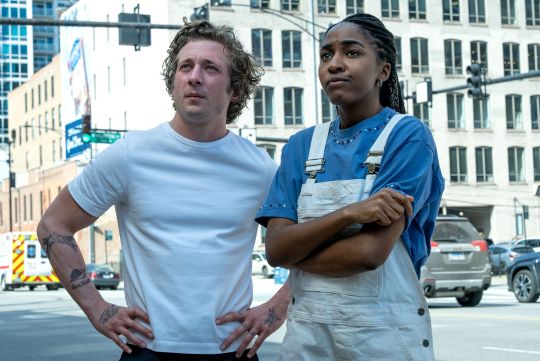
When I first saw you, I already knew
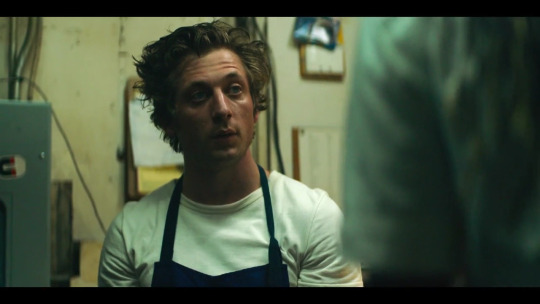
There was something inside of you

How you changed my world, you'll never know
I'm different now, you helped me grow

I looked at you, lookin' at me

Now I know why they say the best things are free
Checkin' for you, [girl] you're right on time

Angel of mine
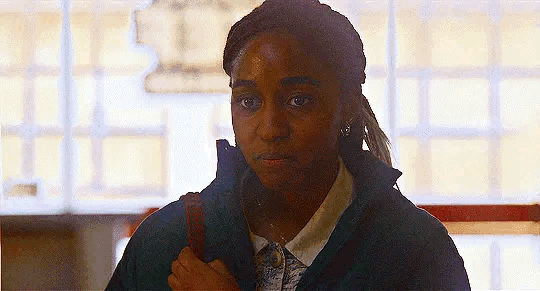
#yes I made a hard copy print out of a fanvid#judge me idc#I suck at patience so learning video editing ain’t happening#is this a fanvid script#I guess#angel of mine by Monica is a treasure of a song#sydney adamu#carmen berzatto#Carmy is straight up in love so hard and so true that he doesn’t even make a fuss cuz loving Sydney is natural
3 notes
·
View notes
Text
Interview: Alex Weiser of Tehachapi Grain Project

Mel Melcon for the Los Angeles Times
Grain has always been a symbolic emblem of America’s vast plains, the land of plenty, the rolling hills dappled with sunlight that can’t hold a candle to the golden grass it bathes. “Oh beautiful, for spacious skies, for amber waves of grain,” the song goes — and one typically thinks of the midwest, home to our treasured grain belt that feeds the entire country. Alex Weiser, an organic farmer of Weiser Family Farms and co-founder of Tehachapi Grain Project, is working to change that standard by establishing a sustainable grain belt in Southern California to feed its local community with flavorful heritage grains — grains that always grew there, we just forgot.
On May 26, Ace Hotel Downtown Los Angeles and Confluence LA will celebrate Tehachapi Grain Project with a dinner that honors the full flavor and scope of heritage grains. We spoke with Alex about the history of grains in Southern California, how he moved to growing heirloom grains to harvest on his farm, and beer, one of the great offsprings of grain.
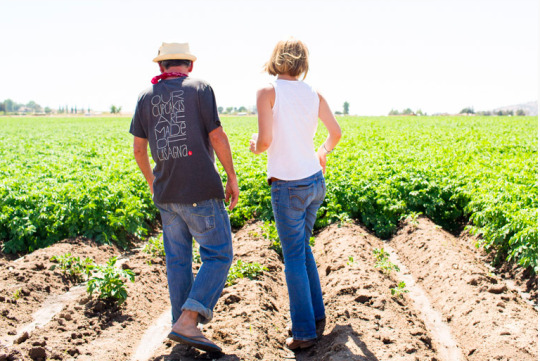
Hi Alex, the dinner menu for the Tehachapi Heritage Grain Project Dinner sounds incredible. Did you work closely with the chefs to bring it together?
Yeah, oh boy, we go way back. Ella and Elaina are both dear friends of mine from I don’t know how many years back. I’ve seen Ella’s growth as a chef, and I knew Elaina back when she was managing the Library Alehouse in Santa Monica. Ella has been to the farm several times. She’s a great person, and loves what she does. We’re good friends. And Elaina’s reached out to help the farm, supporting us. Wonderful.
It ties into how much of your farm is rooted in family history, and how you’re creating this new community around farming. Pretty amazing.
Actually, I’m with my dad now! We’re both here in Claremont. I’m telling my dad, “it’s 95 degrees out, get out of the sun.”
I hope he’s wearing a hat.
Hah, yes, he’s wearing a hat. He starts seeing weeds and goes to them. “Dad, get out. Weed later.”
Always that farm mentality.
Exactly. Doesn’t want to leave the weeds.
When, in the trajectory of you farming, after a long history of only growing and selling vegetables and fruits, did you become interested in growing and harvesting grain?
Great question. Well, grain has always been something to grow and is part of good farming — makes for better carrots and potatoes — and is good for all the other things I grow. What we were doing before with grain was more for soil building. You have land that you’re growing crops that have value, cash crops. California land is prime land so you’re growing what you can with the highest value. I’ve started to grow strawberries, for example. You try to figure out a formula to grow things for profit because your resources as a farmer are limited.
And growing grain is great for that. It’s important to holistic farming to use crop rotation, to implement organic farming. We were growing a mix of grain and turning it into the soil during the green stage for soil building, so it was more about growing the crop and not really letting the crop grow out, going dry, getting a combine, harvesting it. We were more about getting to that cash crop.
Plus, as a small farmer — you know big farmers have the resources — all I’m doing is five acres and they’re working on two hundred acres, or four hundred acres. The guys come out with their big combines for that. Doing just five acres, or ten acres, or even twenty acres, and even if you’re doing different varieties, there just isn’t resources for small farmers, especially in Southern California.
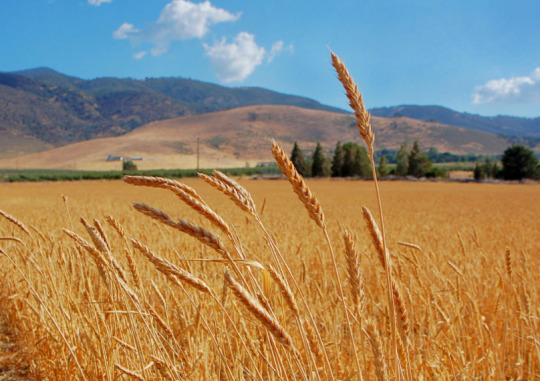
To grow grain out and sell it, it has to have value. Grain growing has always been something that was attractive to us, but there was no money in it; you would need to produce a lot of volume. When you think of grain growing, you think 10,000 acres, and if you do grow it out to seed, you’re growing with a contract. So, if you know you have fewer acres and you’re only getting five cents, it seems like a commodity that has no value.
Maybe you get part of your money back, but it’s usually a loss leader. But I was thinking that growing grain paid part of the cost of making my soil better, I’ll only be down so much an acre, so it still made sense to grow, just not harvest.
But now, being enlightened by chefs and artisans that taught me that there’s a whole world of grain that can be grown and that there are people who want to play with it, experiment with it, it’s led me to grow and harvest heritage grains. It’s not about a big guy coming in and paying you pennies. It’s being bought by people who are specifically interested in your grain.
More local, direct impact.
Just like thirty years ago when we’re like, “Hey, grow heirloom melons. Grow heirloom tomatoes. Hey, grow purple potatoes.” We’re now thinking the same way about heirloom grains, it’s the missing part of the food revolution. That whole world of unique grains and flavors are now in our breads, pastas and beers. There’s so much flavor and variety and health there. Whole grains aren’t bad. They’ve been getting a bad rap because of all that white flour that made everybody unhealthy.
Right, your heirloom grains are actually really low in gluten. And now there’s interest in heritage grains from the average consumer?
Totally. Whole grains are delicious, and there’s so many flavors, and they’re drought tolerant. That’s another beautiful thing that we thought we could contribute to Southern Californian. We’re growing with it, planting it in the fall, with rain water almost exclusively growing our grain crop.
Amazing to have the harvest work with the environment.
It’s just bringing back a grain economy to small farmers. You know, it’s another revenue stream at a time when you’re not making money growing other crops. It’s like, “Oh, now I can grow something that’s low input.” You drill the seed, it grows, you can harvest it. Then I still plant my carrots and potatoes right after, but now I’m making revenue on grains as well. Grain now has value and it’s something people want.
When Glenn Roberts said, “Hey, you should think think about growing grain,” at first I’m like, “Ah, well, I only have 80 acres. I don’t know, and how would I get it harvested?” It’s all timing, too. You got to get it out quick, it’s still tough. But we started developing a small grain economy for our area.
And directly to your community.
Yes, a food community who is supporting the farmers who want to bring the best food to market. We’re creating an economy for all farmers to start getting food directly to the public.
It’s also understanding what grows best here, and getting enlightened by Glenn Roberts. Finding out that, "Gee, the history of California is grain growing — California used to be the top grain producing state in the country.”
Wow, I didn’t know that. Most would only just think of Kansas and North Dakota, these giant fields in the grain belt.
Right. It’s because it grows there well, it’s because the land there is plentiful and cheap, and they get rain. But as far as what grain likes, flavors we can produce with heritage grains, and where it’s from originally, it’s actually from a Mediterranean climate. That’s what we have here. We have fall and winter rains, then dry, dry summers.
Grains have acclimated so that it does better here. It’s just that with the monoculture system, grain growing kind of got pushed to the side because we were growing things that are worth the most.
But now there’s a market for the grains that already do well in Southern California’s climate.
Why I like growing heritage grain is because it’s good for the soil, good to build the soil. It’s good for the environment. Our environment. And it makes my vegetables better. Now, maybe we can make some money on it too, at a time we didn’t. It helps the farm by having something we grow with rain cycle. It’s a win win.

One of the things that I found really interesting is that ingrained in this project is a community effort around it, working to seed your local community, working with other farms. And that the grains that you’re choosing to grow came from interest from chefs, etc. I read that the first grain that you grew was buckwheat for someone who wanted to make their own soba noodles. I thought it was amazing to see this communication and collaboration between farms and its local community.
Totally, I feel very honored to have the opportunity to work with chefs and makers who were enthusiastic and interested, “Come on, hey, you should be doing this.”
It makes food really about feeding people, and creating a direct relationship between farms and households. Suddenly, farmers are a huge part of the conversation, not so much the middle-men who package and sell food.
It’s great to see. There’s an environment that’s better. It’s bringing back farming to the way it was before World War II. That was when everybody farmed. You grew your grains, you rotated, you fed your community from your farm. Then the chemical revolution happened and things shifted.
“Gee, I can grow strawberries. Peaches. I can grow other things that I don’t usually grow.” Anything that doesn’t pay well, no one tends to do as much. Not that they were getting rich on the grain, but there’s things we can make from it. Like I said, it’s something we can make a little bit of money on, create maybe, be a part of. There’s a lot of wheat products…
We can do pasta. Beer! They just create the basis for so many things. Or even just selling it, growing exotic grains and getting it to the Ellas of the world, people who are passionate and care for flavor. We like growing for flavor, growing unique things. Health does not come from mass produced stuff.
Can you tell me about some of your heritage grains and what makes the flavor different from what I’m usually getting?
You know, the chefs will have more feedback on flavor. There’s so much variety there. I’ve heard that my grains have more fruity flavor, that it smells so good and tastes so much better, but they’re the experts on flavor. I just know that people I really respect have been buying it again and again, “this grain is the best.”
That’s amazing.
It makes sense for all the right reasons. With heritage grains you can smell it, the flavor is unique. And I’m getting seed from Glenn Roberts and I’m taking his advice of what grows best here, like Sonora wheat. Sonora wheat is an original wheat that came to California with the missionaries. It’s that soft flour that tortillas are made from. They brought it here because it was drought tolerant and it grew better here.
It’s originally from Mexico so it’s what grows best here. It’s historical, has uniqueness, and we like bringing varieties from Italy as well. It’s a whole science. Not just growing grain, but then the milling of it, the uses, and the different types of grain. That’s what’s exciting too, there’s so much demand for high quality grains. Especially if you’re an artisan and you want to separate your product in the market. It’s finding the best ingredients you can.
It follows the principle of growing, what you should grow is what grows best in that environment. It’s good farming.
More farmers can now say, “Hey, I can crop rotate and make some money on all my crops. Now I can be organic farmer.” Now it makes financial sense to them.
Right, there is value there.
It creates an economy. Being a farmer’s market farmer, you meet the chefs at the markets and develop relationships over thirty-five years, it’s like being street level. You hear “I’m opening a bakery, hey I make pasta. Yeah, grow that particular grain for that.” That’s what happened, basically.
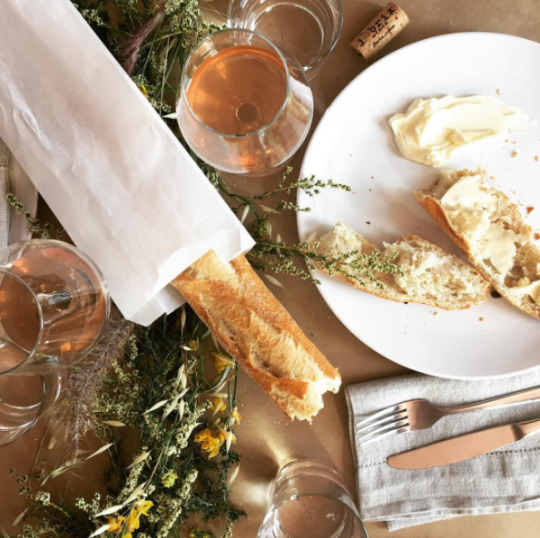
I love that relationship that develops out of food. It’s so great when farmers, chefs and the public become so interested in what they’re growing, cooking, what they’re eating. It creates a community around food culture that informs each other, helps each other be more mindful.
Totally. That’s what’s totally going on. I love it too. It’s nice to know who you’re growing for and giving people healthful choices.
Yes, and it’s also wonderful that you’re working with other farmers and growing a grain belt in Southern California. I thought that this kind of collaborative farming was a new concept, but it sounds like you’re saying that it’s actually revitalizing old farm traditions.
Right. It’s partly doing things that would be easier together, going in on combines and helping harvest. And it’s partly just trying to get back to our farming principles.
This will be more and more important as our world changes.
It’s also going back to the history of our area which is rooted in grain growing, it’s the first things that were growing in our area.
That’s so wild that it was abandoned at some point.
It just wasn’t worth it for people. But now, it’s funny to look at the wild rye that grows every year — rain comes, the rye grows — and it’s just been growing under my nose for a long time. This rye has been self propagating, it’s been acclimated from years of growing here from other farms way back. It keeps re-seeding itself, it’s established. And that tells you that it’s firmly at home in the ground. When it’s growing wild, it’s probably a good thing.
It’s like in Oregon, you have great berries, and it’s probably because wild berries love growing there.
They’re everywhere! You can walk around and just pick berries anywhere from the side of a highway to deep in the forest.
Yeah. I’m excited about grain and studying about what people are making with them. We’re happy to grow it. It’s good for our soil, it’s good for our property. It’s good for the environment, and it makes for better vegetables and it gives us the full array of food possibilities. Who knows what we can make from it? Pizza? Beer? Hah, I keep going back to beer.
Sounds like you need a cold one, right now.
That, and I think I want to collaborate with a brewer. We’re growing barley, beer barley, which is a particular brewing barley. We’ll work with local breweries.
It’s so exciting that you get to collaborate with all of these different makers.
Well, you know what? You grow good things that have flavor — everybody wants flavor, everyone likes good things to eat and drink — and the people will come. It’s very fulfilling to do and the future is exciting.
Ok, I’m going into the field.
#weiser family farms#tehachapi grain project#yes#confluence la#los angeles#alex weiser#heirloom grains#southern california
7 notes
·
View notes
Text
Sad Music Tag
I was tagged by @emosewapie to give a list of 5 songs I listen to when I feel down! Thanks for the tag! Alright let’s see:
Hold On by the Jonas Brothers (I can’t believe we share this one!)
Can You Stand the Rain by New Edition
Angel of Mine by Monica
Circle by Flyleaf
I’m Still Here by Johnny Rezeznik (Treasure Planet movie song!!)
I tag: @elle-tolentino @domi-matsuhiro-cea @danielriddlerodriguez
3 notes
·
View notes